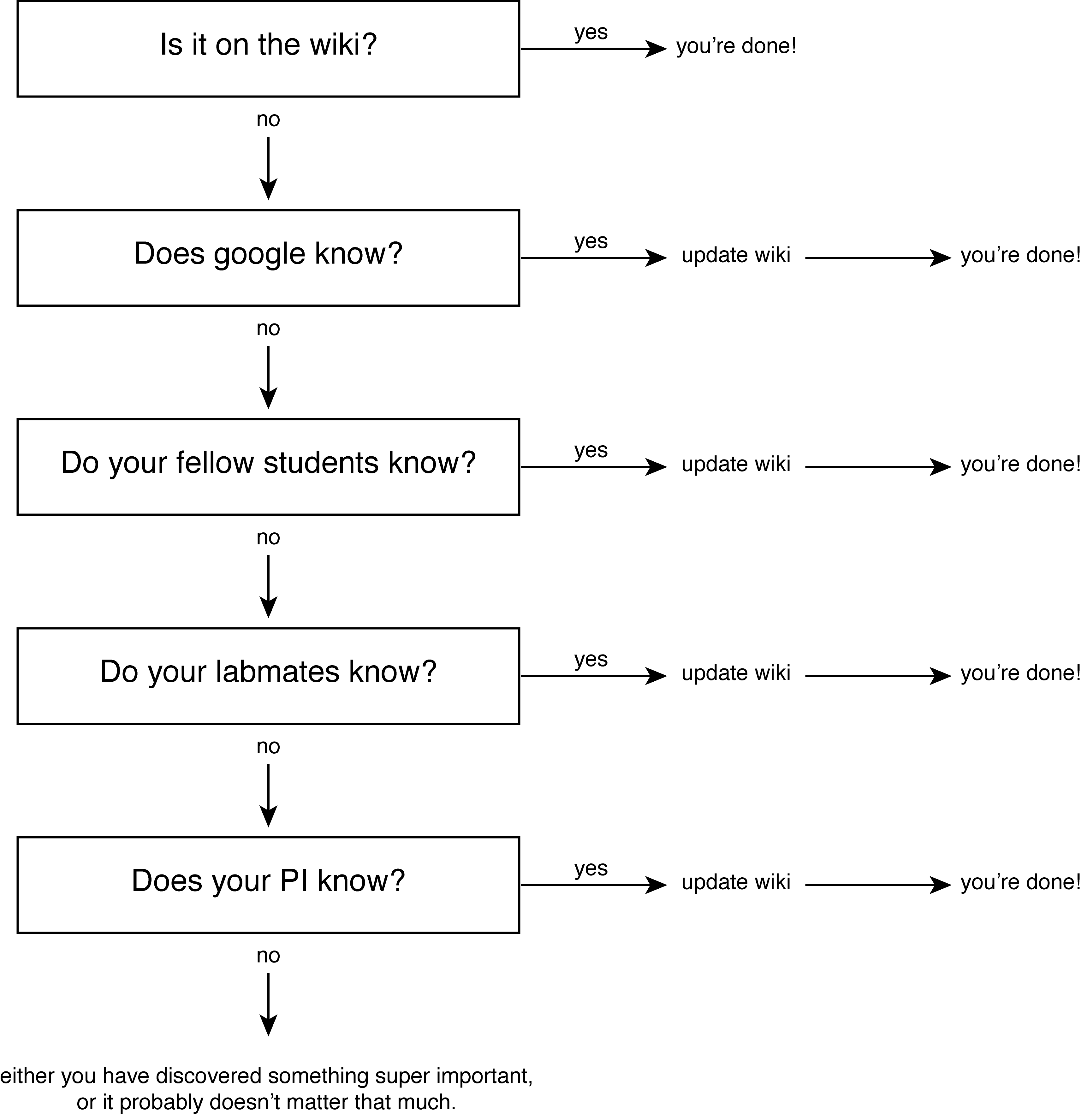lab_wiki
Welcome to the MetaLab!
We are based primarily at the Institute of Cognitive Neuroscience, also known as the ICN. Many of the lab also have affiliations with either the Department of Experimental Psychology and/or the Max Planck Centre for Computational Psychiatry. We also work closely with the the Department of Imaging Neuroscience (also known as the FIL - Functional Imaging Laboratory), where we run most of our neuroimaging experiments. It might seem confusing at first, but all of these units are part of University College London (UCL). We hope you have an excellent and productive time during your stay in the lab! This manual was developed by the lab PI, Steve Fleming together with other group members, and is a rough outline of how Steve expects the lab to function within the wider ICN and UCL infrastructure (who’s rules and policies should take precedence).
It’s inspired by several others (particularly the lab manuals of Anne Urai, Liad Mudrik, Mariam Aly, Trina MacMahon, Brad Voytek, Nancy Kanwisher and Michael Beyer). In turn, we would be glad for others to make use of this manual when setting up their own groups, and have made it available under a CC-BY 4.0 license. If you can think of anything that is missing, or things that are unclear, then please let us know - ideas are always welcome!
First steps
We recommend reading through this manual, and exploring the links over on the lefthand side. In particular, getting started will talk you through some initial practical steps to work through.
For details about our team, research and publications see metacoglab.org. The lynchpin of everything that happens in the lab is our lab manager and all-round miracle-worker Sarah Kalwarowsky. If you’ve read through this manual and still don’t know the answer to your question, then Sarah is the person to ask.
Have a question?
 Adapted from Jonathan Peelle
Adapted from Jonathan Peelle
Contributing to this wiki
- Fork the repository.
- Clone your own fork to local
- Edit existing
.mdfiles, or create a new one with the following header:--- layout: default title: Shortest route to the coffee machine rank: 1 --- - Add, commit and push to your fork
- Create a PR: go to Pull Requests / New / Compare across forks and select your fork. Explain what you’ve added, and I’ll incorporate your edits in the wiki.